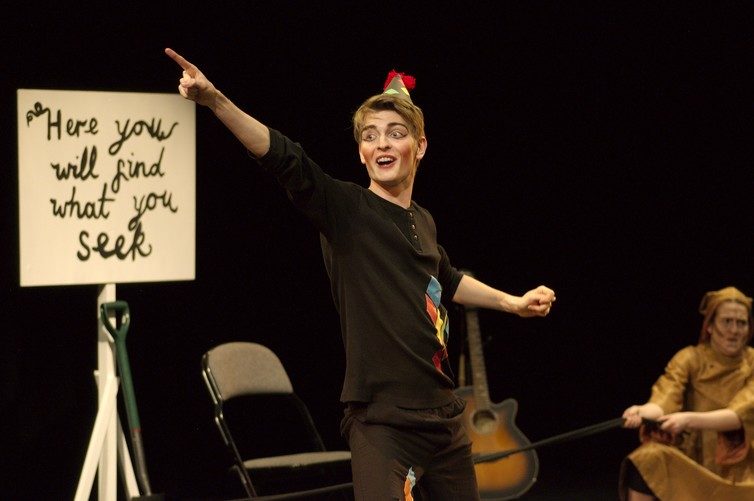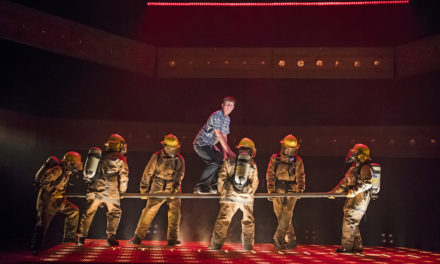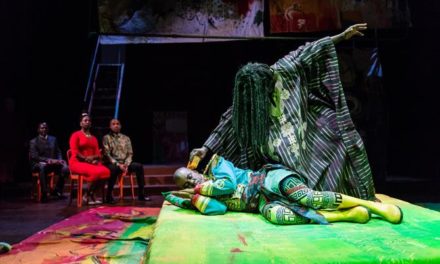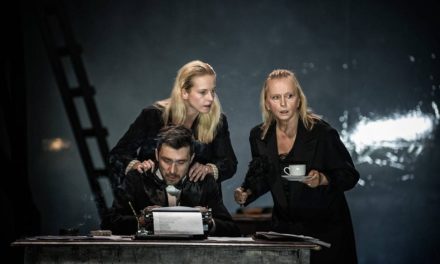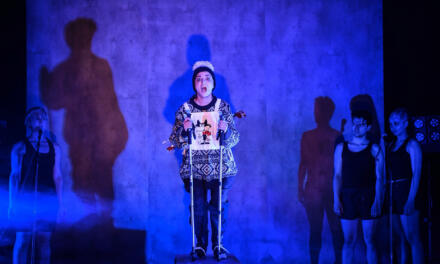The film Denial, which opened in the U.K. on Holocaust Memorial Day, tells the story of author David Irving’s denial of the Holocaust. In 1996, on being accused of such by historian Deborah Lipstadt, Irving filed a libel suit. He lost the case. But Holocaust denial and anti-Semitism did not end with Irving’s defeat. How, then, should we remember the victims of the Holocaust today? In a post-truth society, facts are not enough. The challenge for public intellectuals is to maintain rigor while at the same time making people feel enough to care, and care enough to act.
As the enduring appeal of Anne Frank’s diary – the revelation of her private hopes, dreams, and fears – has demonstrated, one of the most powerful ways to establish an emotional relationship with the past is through the vivid individual voice. A similar experience is gained on reading newly-discovered scripts that reveal the public hopes, dreams, and fears of prisoners in the World War II Jewish ghetto at Theresienstadt.
https://www.youtube.com/watch?v=hYcx43AmAyY
Theresienstadt, located 40 miles northwest of Prague, served first as a transit camp where the Jews of Central Europe were gathered before being deported to “the East,” and later as a model ghetto, intended to persuade international visitors that Germany was actually establishing “independent Jewish settlements.” Due to its unique role in the Final Solution, living conditions in the ghetto allowed for a thriving cultural life that included concerts, theatrical performances, and public lectures.
Although the Nazis exploited the prisoners’ artistic endeavors in the summer of 1944, when International Red Cross delegates attended a concert and a children’s opera during a tour of Theresienstadt, the vast majority of the cultural activities were organized by the prisoners, for the prisoners. Censorship was minimal because the Nazis knew, as the prisoners did not, that deportation to “the East” meant to Auschwitz and other extermination and slave labor camps. Their oppressors had no reason to care what the prisoners shared with each other in the final months of their lives.
What they shared with other, as the scripts reveal, is startling: deep insights into their own situation expressed through humor, poetry, and passionate political commitment.
Fascism and capitalism
Comedy About A Trap, for example, was written by 23-year-old prisoner Zdeněk Jelínek and staged in the ghetto in December 1942. The trap of the title, however, is not the ghetto – but capitalism. Inspired by his own belief in the ideals of communism and the humor and stylized characters of commedia dell’arte theatre, he critiqued the military-industrial complex through traditional commedia characters such as Capitano, the braggart military officer (fascism), and Pantalone, the miser (capitalism).
A new character drawn from Czech folk tales, the imp (and Communist agitator) Rarach, shows the lovable Harlequin and his friend Columbina how to free themselves through collective action. At the end of the play, the three of them celebrate Jelínek‘s vision of the post-war future:
A world without Pantalones and their Capitanos,
A world sounding like a marching song,
A world, rosy as a landscape in the morning.
A world of human work, and still a holiday.
Dancing with death
A 14-year-old boy named Hanuš Hachenburg created one of the most disturbing testimonials to life in the ghetto: an extremely dark comedy called Looking For A Spectre. Written as a puppet play but apparently never staged, it features a power-mad king who creates a figure of Death out of the bones of his subjects to terrify them into submission.
In the final scene, set in the Circus of History, Fate, and Co., a Jewish ringmaster and children look on while the king himself dances with Death. The pair blames each other for the terrible state of the world, but a young boy interjects, declaring that neither of them is at fault.
Is this a sarcastic comment on an abdication of responsibility, or a deeper question about larger forces than Hitler at work in society?
Meanwhile, with The Death Of Orpheus, 21-year-old Georg Kafka, a distant relative of Franz Kafka, created a profoundly poetic meditation on the meaning of art for a society in crisis. After Orpheus loses Eurydice, he destroys his lyre. Without his music, there is no springtime, there are no harvests. Shepherds beg him to play and revive the natural world, but he is too preoccupied with his lost love. In one particularly chilling verse, he says to Alkaios, his favorite shepherd boy:
Do you know what love is? It is this very silence.
Concealing from the ones we love the knowledge
Of all the horror meant for us alone.
This verse is particularly unsettling because Georg Kafka was employed in the ghetto in the office that assembled the deportation lists. He may have been one of only a handful of people who knew their true destination. Nevertheless, when his mother was placed on one of the lists, he voluntarily joined her.
Jelínek, Hachenburg, and Kafka all perished. But their works have been preserved and now are being staged for new audiences. My colleagues and I at the Performing the Jewish Archives project, are bringing these and other suppressed works of theatre and music back to the stage, making them accessible through five international festivals and recordings on our website. It is our fervent hope that their voices will have the power to stir compassion, not only for those whose lives were cut short in the past but for those fleeing destruction in the present.
To modify an old adage for the 21st century: perhaps if we come to understand not only the facts but the emotional meaning of history, we will not be doomed to repeat it.
This post was written by the author in their personal capacity.The opinions expressed in this article are the author’s own and do not reflect the view of The Theatre Times, their staff or collaborators.
This post was written by Lisa Peschel.
The views expressed here belong to the author and do not necessarily reflect our views and opinions.

